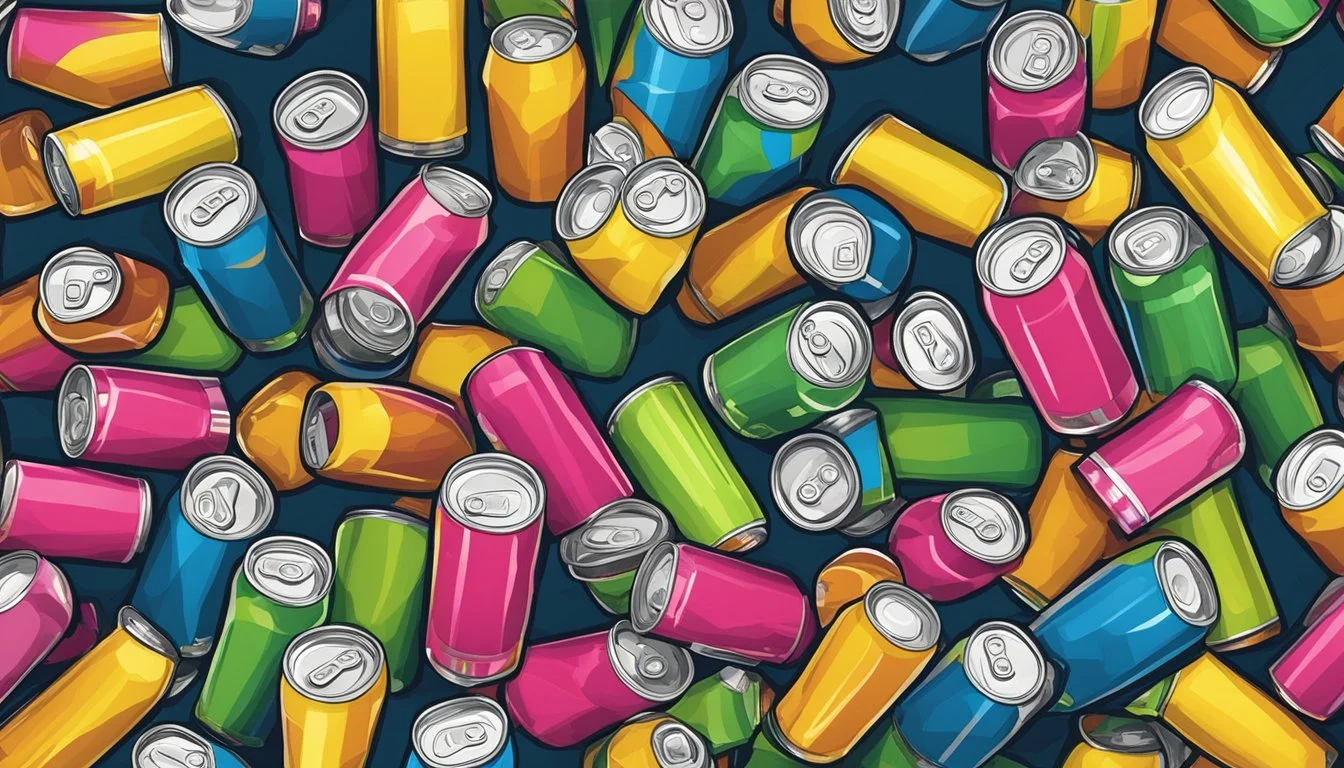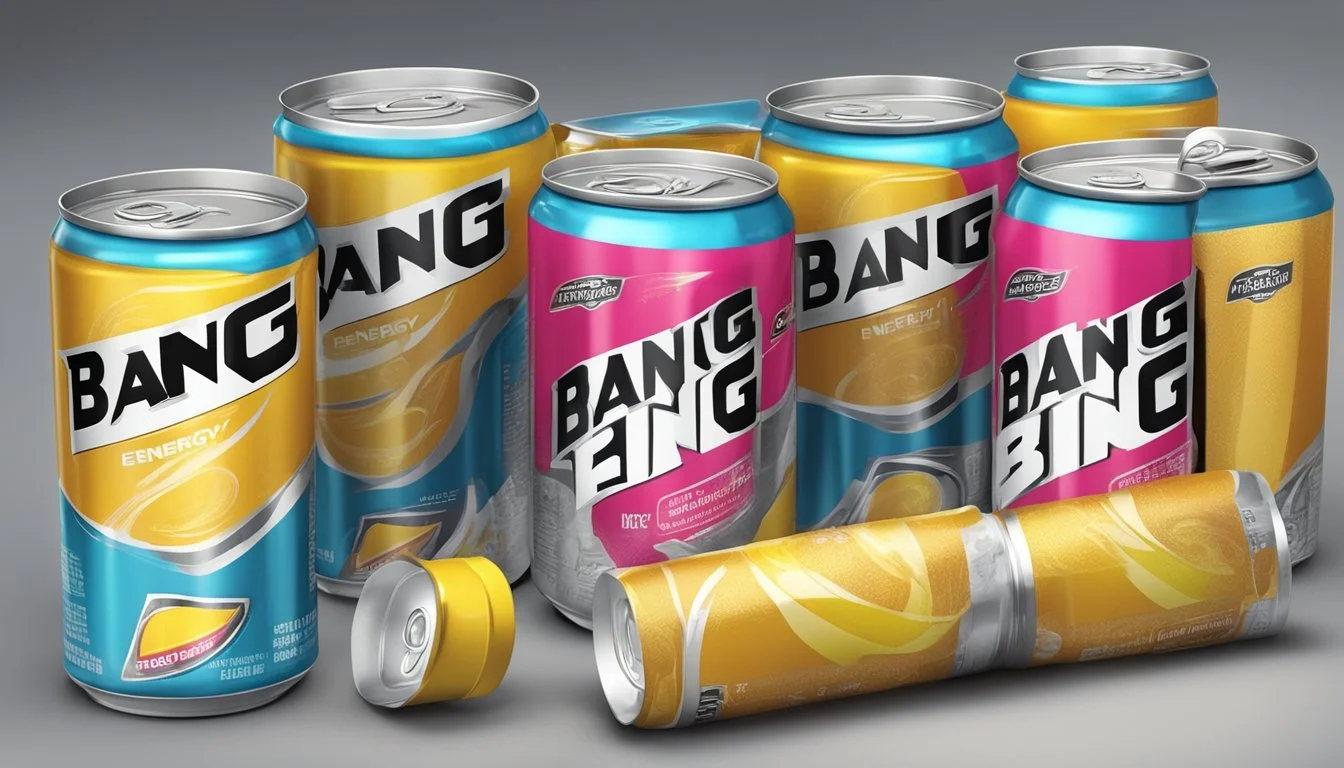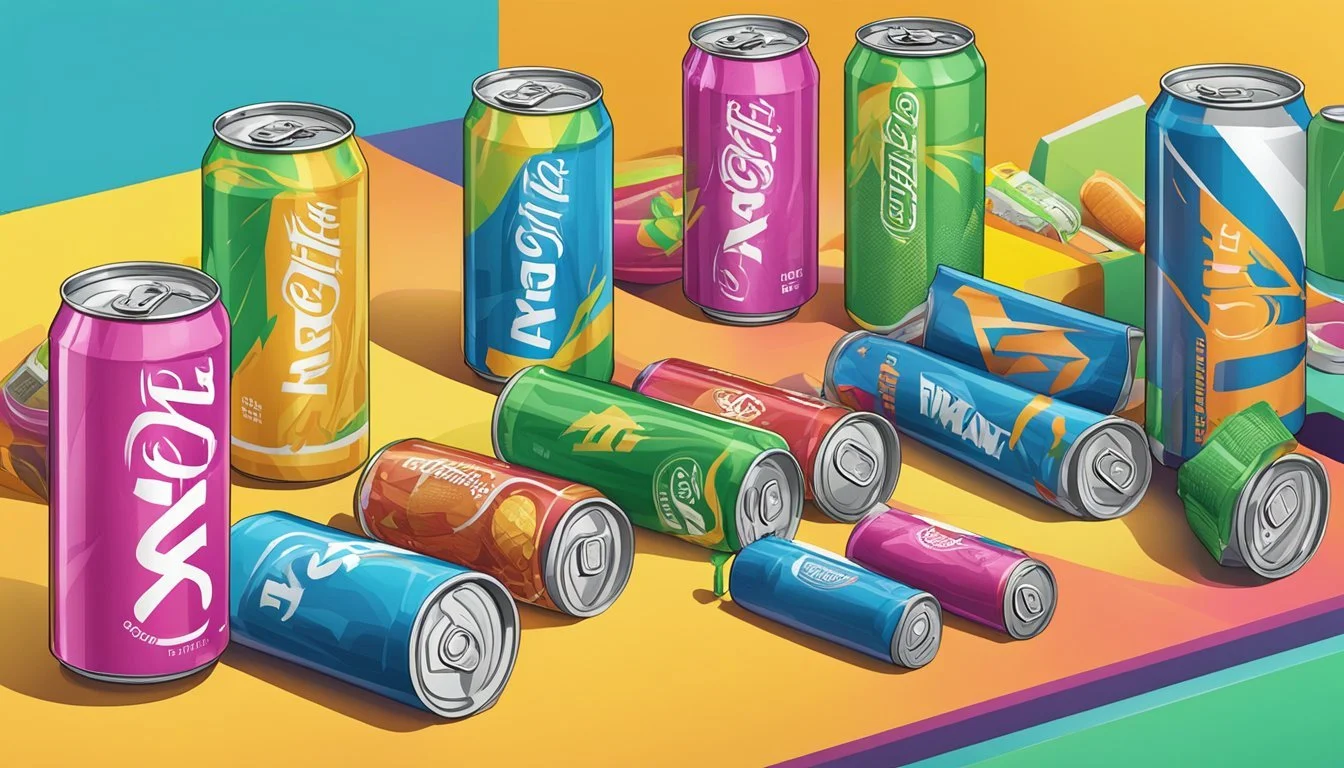How Many Servings of Bang Is Too Much
Expert Recommendations and Health Risks
Bang Energy drinks have surged in popularity, especially among young adults and fitness enthusiasts. A key factor driving this energy boost is the high caffeine content, with each 16 fl. oz. can packing a whopping 300 milligrams of caffeine. Given that the FDA recommends a maximum of 400 milligrams of caffeine per day, consuming more than one can of Bang can quickly exceed this limit.
The significant caffeine levels in Bang provide an immediate energy jolt comparable to drinking about three cups of coffee in one go. This immense jolt can be especially appealing for those needing an active pick-me-up, but it also brings a risk. Too much caffeine can lead to adverse effects such as jitters, insomnia, and increased heart rate. For individuals sensitive to caffeine, even one can might be too much.
Moreover, Bang Energy drinks boast 0 calories, which might seem advantageous for calorie-conscious consumers. However, this zero-calorie perk does not mitigate the concerns associated with high caffeine intake. Energy-seekers should consider these factors carefully to avoid overconsumption and potential health issues.
Understanding Bang Energy Drink
Bang Energy Drink provides a notable energy boost without calories, making it a popular choice among those seeking increased vitality without dietary drawbacks.
Composition of Bang
Bang Energy Drink is known for its high caffeine content, delivering 300 mg per 16 fl. oz can. In addition to caffeine, it contains Branched-Chain Amino Acids (BCAAs) and Super Creatine, which are marketed to support muscle health and energy levels.
Bang is sugar-free, utilizing sucralose as an artificial sweetener. Other key ingredients include coenzyme Q10, various amino acids, and a mix of B-Vitamins (like B6 and B12). These components work together to enhance mental focus, endurance, and overall energy.
Nutritional Profile
Bang Energy Drink stands out due to its zero-calorie formula. Each 16 fl. oz can has no calories, making it suitable for calorie-conscious individuals. Vitamin C, Vitamin B6, and Vitamin B12 are prominent, supporting immune function and energy metabolism.
It also contains magnesium and potassium, essential for muscle function and hydration. The use of sucralose instead of sugar ensures that the drink remains low in carbs. This combination of vitamins, minerals, and energy-boosting ingredients makes Bang a powerful, diet-friendly option for those needing a quick energy lift.
Caffeine in Bang
Bang Energy Drinks contain a significant amount of caffeine, making them a potent option for those needing an energy boost. This section focuses on the caffeine content of Bang compared to other beverages and recommended guidelines for daily caffeine intake.
Caffeine Content and Comparison
Each 16-ounce can of Bang Energy Drink contains 300 milligrams of caffeine. This is notably higher than other popular caffeinated beverages. For comparison:
An 8-ounce cup of coffee typically has about 95 milligrams of caffeine.
Most soft drinks contain significantly less, often around 30-40 milligrams per serving.
300 milligrams of caffeine per can means that Bang delivers over three times the caffeine found in a regular cup of coffee. This high caffeine content puts it among the strongest energy drinks available on the market. For those seeking a strong energy boost, Bang's concentration of caffeine makes it an attractive choice.
Caffeine Intake Guidelines
The FDA recommends a daily caffeine intake limit of 400 milligrams for most adults. This means that a single can of Bang, with its 300 milligrams of caffeine, brings an individual close to this upper limit. Consuming more than one can in a day could easily exceed the recommended safe levels.
Moderation is crucial when consuming high-caffeine beverages. Exceeding the FDA’s daily limit can lead to negative side effects such as insomnia, nervousness, restlessness, and a rapid heart rate. It's essential to consider all sources of caffeine in your diet, including coffee and other energy drinks, to avoid surpassing the daily caffeine limit.
It's important to note that individual tolerance to caffeine can vary. However, adhering to these guidelines can help prevent potential health risks associated with excessive caffeine consumption.
Health Effects of Bang Consumption
Bang Energy drinks contain a variety of ingredients that may offer benefits such as improved exercise performance due to the caffeine content. However, they also pose potential risks like increased heart rate and anxiety from too much caffeine intake. Understanding these impacts can help consumers make informed choices.
Potential Benefits
Bang Energy drinks can enhance physical performance and alertness. The caffeine content, equivalent to about three cups of coffee per can, boosts both mental and physical energy. This can be helpful for those engaged in exercise or needing sustained concentration.
Vitamins such as B6 and B12 in Bang can support metabolic function and energy production. The inclusion of Coenzyme Q10 may also help with energy production on a cellular level, although more research is needed to confirm this. Being calorie-free, Bang drinks can fit into diets that aim to manage or reduce obesity.
Possible Side Effects
Excessive consumption of Bang Energy can lead to negative health effects. High levels of caffeine can cause increased heart rate, high blood pressure, anxiety, and insomnia. Regular intake beyond the recommended limit of 400mg of caffeine can also result in headaches and nausea.
In addition to caffeine, artificial sweeteners and preservatives included can impact blood sugar levels and may be harmful in high quantities. Continuous consumption might also strain the heart and contribute to long-term health issues. Monitoring intake is crucial to mitigate these health risks.
Nutritional Considerations
Bang Energy Drinks are distinct because they offer a unique nutrient profile, free from calories, fats, and sugars, but contain significant levels of caffeine and other ingredients aimed at enhancing energy levels.
Macronutrients and Micronutrients
Bang Energy Drinks contain zero calories, which distinguishes them from many other energy drinks. No fat, carbohydrates, or fiber is present in these drinks.
Protein content is also non-existent. However, Bang includes CoQ10 and amino acids like BCAAs, which are beneficial for muscle maintenance and repair.
Additionally, it provides Vitamin B3 (Niacin) at a level beneficial for energy production. Despite these additions, it’s essential to note they lack substantial amounts of necessary daily nutrients, acting more as supplements than full-fledged nutrition sources.
Electrolytes and Hydration
When it comes to hydration, Bang's formulation includes some electrolytes. Key electrolytes found in these drinks are sodium, potassium, calcium, and magnesium. These are crucial for muscle function, fluid balance, and preventing cramps.
While Bang does provide these electrolytes, their quantities are relatively low compared to other sports drinks specifically designed for hydration. They do help in warding off dehydration to an extent but should not be relied upon as the primary source for electrolyte replacement during intense physical activities.
Remember, while Bang Energy Drinks can offer a short-term hydration boost, they shouldn't replace water or well-balanced fluid intake.
Proper Usage and Serving Size
When consuming energy drinks like Bang, it's vital to understand how much is too much. Consumers should be aware of recommended serving sizes and signs of overconsumption to prevent health risks.
Recommended Consumption
Serving size: One serving of Bang is typically one 16-ounce can. Due to its high caffeine content, it is crucial to limit intake.
Daily limit: The FDA suggests not exceeding 400 milligrams of caffeine daily. Given each can of Bang contains around 300 milligrams, it's advisable not to consume more than one can per day.
Moderation: Consuming energy drinks in moderation can help avoid adverse effects such as jitteriness, insomnia, and increased heart rate. Bang should be paired with a balanced diet to avoid complications like weight gain and potential diabetes risks from the sugar content.
Identifying Overconsumption
Symptoms of overconsumption: Look out for symptoms such as rapid heartbeat, anxiety, and gastrointestinal issues.
Health risks: Regular overconsumption can lead to more severe health issues like high blood pressure or heart disease. Weight gain and increased risk of developing diabetes can also occur with excessive intake.
Monitoring intake: Keep track of daily caffeine intake from all sources, including coffee, tea, and sodas. Be vigilant about the body's response to caffeine, and adjust consumption levels accordingly.
Maintaining a balanced approach is key to enjoying Bang responsibly. By understanding the recommended limits and recognizing the signs of overconsumption, consumers can enjoy energy drinks without compromising their health.
Flavors and Varieties
Bang Energy drinks come in a variety of flavors that cater to different taste preferences. The lineup includes both classic and innovative flavors, offering options from fruity to sweet blends.
Popular Flavors
Some of the best-selling Bang Energy flavors include Rainbow Unicorn, Peach Mango, Black Cherry Vanilla, Blue Razz, and Pina Colada. Each of these flavors has garnered positive reviews for taste and effectiveness.
Rainbow Unicorn stands out with its unique, sweet fruity blend that appeals to many. Peach Mango combines the tropical sweetness of mango with the juiciness of a ripe peach. Black Cherry Vanilla offers a rich, creamy sensation with a hint of cherry tartness.
Blue Razz provides a classic blue raspberry taste that’s both tangy and sweet. For those seeking a tropical escape, Pina Colada delivers a combination of coconut and pineapple. These flavors not only energize but also cater to various palates, making them favorites among Bang consumers.
Choosing a Flavor Profile
When selecting a Bang Energy flavor, consider your flavor preferences and dietary restrictions. Bang offers flavors with natural flavors and some varieties without artificial colors. If one prefers something fruity, options like Blue Razz and Peach Mango are excellent choices.
For those who enjoy dessert-like flavors, Black Cherry Vanilla might be more appealing. The presence of natural flavors in some of these drinks indicates a commitment to quality ingredients.
While choosing, also take note of flavor names like Radical that suggest bold and adventurous profiles. Sampling a few different varieties can help pinpoint which flavor profile suits individual tastes best.
Bang Energy Drink and Lifestyle
Bang Energy Drink can be integrated into a variety of lifestyle choices, especially when it comes to diet and fitness. This section explores how Bang’s specific nutritional profile can fit into calorie management and its role in enhancing workout performance.
Bang in Diet and Weight Management
Bang Energy is a calorie-free beverage, making it an attractive option for those following a low-calorie diet or aiming to manage their weight. Many energy drinks on the market come loaded with sugar content that contributes to weight gain and other health issues, but Bang offers a sugar-free alternative that avoids these pitfalls.
While Bang doesn't contain essential nutrients found in more balanced beverages, its lack of calories and sugar makes it easier to consume without worrying about unwanted calorie intake. This can be particularly beneficial for those who need an energy boost but are cautious about their daily caloric intake.
Incorporating Bang into meals can also be strategic. It can serve as a mid-morning pick-me-up or pre-lunch refreshment that helps stave off fatigue without adding to caloric or sugar loads.
Incorporating Bang into Fitness Regimens
Athletes and fitness enthusiasts may find Bang Energy helpful for improving exercise performance. Each 16-ounce can contains 300 milligrams of caffeine, which translates to roughly three cups of coffee. This high caffeine content can provide a significant energy boost before a workout, increasing alertness and reducing feelings of fatigue.
Caffeine has been shown to improve aspects of physical performance such as endurance and strength. By consuming Bang prior to exercise, individuals may experience enhanced workout efficiency and might be able to push through demanding training sessions with greater ease.
However, it is crucial to be mindful of the FDA’s daily caffeine limit of 400 milligrams to avoid adverse side effects like jitteriness or insomnia. Within this boundary, Bang can be a potent addition to an athletic diet, helping to maintain energy levels during and after intense workouts.
Regulatory and Manufacturing Information
The production and regulation of Bang Energy Drinks involve multiple factors, from ingredient approval to manufacturing oversight. Understanding these helps consumers make informed choices.
FDA Oversight
The FDA (Food and Drug Administration) has a critical role in regulating ingredients found in Bang energy drinks. They monitor the use of sucralose, sodium benzoate, and potassium phosphate dibasic. These ingredients are included for sweetness, preservation, and nutritional value.
Caffeine content in energy drinks is closely watched by the FDA. With Bang containing 300mg per 16 fl. oz., it's important to note that the FDA’s recommended maximum daily intake of caffeine is 400mg. Bang’s other ingredients, including vitamin B3 (Niacinamide), pyridoxine hydrochloride (Vitamin B6), and methylcobalamin (Vitamin B12), also come under FDA scrutiny to ensure safety and compliance.
Production by Vital Pharmaceuticals
Vital Pharmaceuticals, also known as VPX Sports, is the manufacturer behind Bang Energy Drinks. Founded by Jack Owoc, the company emphasizes high-quality production standards.
Bang drinks are manufactured using a range of additives, including potassium citrate monohydrate, calcium chloride, magnesium chloride, and calcium disodium EDTA. These substances help maintain the stability and shelf-life of the drink. Potassium sorbate and sodium benzoate are added for their preservative qualities, ensuring the product remains safe for consumption over time.
The company’s manufacturing process follows strict guidelines, maintaining transparency regarding their formulations and maintaining quality control across their product line.







